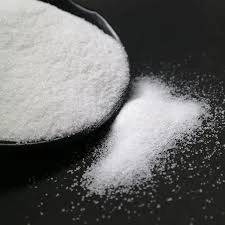Active Ingredients in Pharmaceutical Products An Overview
Pharmaceutical products are a cornerstone of modern medicine, providing essential treatments for a wide range of health conditions. At the heart of these products are active ingredients, which are the biologically active components that produce the intended therapeutic effect. Understanding active ingredients is crucial for healthcare professionals, researchers, and patients alike, as they determine the efficacy and safety of medicinal products.
Active ingredients can be categorized into two main types small molecules and biologics. Small molecules are typically low molecular weight compounds that can be synthesized chemically. Most traditional medications, such as aspirin and antibiotics, fall into this category. These compounds work by interacting with specific biological targets in the body, such as enzymes or receptors, to modulate physiological processes.
Biologics, on the other hand, are larger, more complex molecules made from living organisms. This category includes a variety of products such as monoclonal antibodies, vaccines, and hormones. Biologics often target more complex pathways in disease processes and can offer innovative treatment options for conditions like cancer, autoimmune diseases, and infectious diseases.
The selection of active ingredients in a pharmaceutical product is guided by several factors. First and foremost, the mechanism of action must align with the desired therapeutic outcome. For instance, in treating hypertension, a medication may contain active ingredients that act as angiotensin-converting enzyme (ACE) inhibitors or calcium channel blockers. These ingredients help to relax blood vessels and lower blood pressure.
active ingredients in pharmaceutical products

Additionally, the pharmacokinetics and pharmacodynamics of the active ingredients play vital roles in drug development. Pharmacokinetics refers to how the body absorbs, distributes, metabolizes, and excretes a drug, while pharmacodynamics focuses on the effects of the drug on the body. A drug must reach a therapeutic concentration in the bloodstream without causing toxicity, which is a delicate balance that formulators must achieve.
Another important aspect of active ingredients is their potential for side effects and drug interactions. Each active ingredient can produce a range of effects, some of which may be undesirable. Therefore, understanding the side effect profile and interactions with other medications is essential for ensuring patient safety. This is particularly critical in populations such as the elderly, who may be taking multiple medications concurrently.
The regulatory framework concerning active ingredients is rigorous, ensuring that pharmaceutical products are both safe and effective. Agencies like the U.S. Food and Drug Administration (FDA) and the European Medicines Agency (EMA) require extensive clinical testing to evaluate the safety and efficacy of drugs before they can be marketed. This process often involves multiple phases of trials, allowing researchers to gather comprehensive data on how active ingredients behave in human subjects.
The landscape of active ingredients is continually evolving. Advances in technology and biotechnology are paving the way for the development of novel active ingredients that can address previously untreatable conditions. Personalized medicine, which tailors treatment to the individual characteristics of each patient, is also gaining traction, further highlighting the importance of understanding active ingredients and their mechanisms of action.
In conclusion, active ingredients are the foundation of pharmaceutical products, playing a pivotal role in their therapeutic effects. Through rigorous research and regulatory scrutiny, the pharmaceutical industry strives to ensure that these ingredients provide safe and effective treatment options for patients. As science progresses, the understanding and application of active ingredients will continue to evolve, holding the promise of better health outcomes for future generations.

